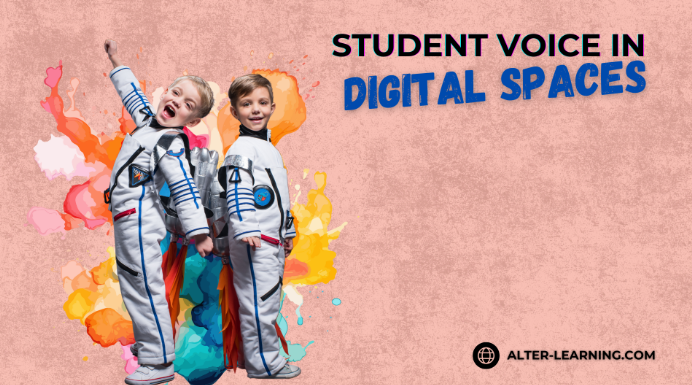As educational landscape evolves, students are increasingly expected to take ownership of their learning. But too often, the tools they’re given were designed without their input. Educational platforms may align with standards and perform well on paper but fail to connect with the learners themselves.
What if the first step toward more effective EdTech wasn’t new features—but better listening? Immersive tools that reflect student voice and offer meaningful choice can help transform learning from something students receive into something they help shape. Alter-Learning is here to help.
Why Student Voice Matters
Student voice isn’t just about surveys or feedback forms. It’s about recognizing learners as partners in their education. When students see their preferences, challenges, and learning styles reflected in the tools they use, they are more likely to engage deeply and meaningfully.
In immersive platforms, honoring student voice can look like:
- Allowing for customization, where learners can control elements of their experience,
- Providing multiple pathways to solve problems, complete challenges, or explore content,
- Offering flexible pacing, so students don’t feel rushed—or held back,
- Including creative expression, such as opportunities to design, compose, or build within the environment.
These features allow students to feel seen, respected, and involved—conditions that can lead to greater motivation and ownership.
Designing for Agency and Autonomy
Student-centered design doesn’t mean unlimited freedom. It means creating structured opportunities where students can make meaningful choices. In immersive STEAM educational games, learners might decide which engineering challenge to tackle, how to approach a virtual coding task, or which variables to manipulate in an interactive physics simulation.
Tools that promote agency may include:
- Open-ended exploration, where students can move through environments at their own pace,
- Scenario-based challenges that offer multiple solutions and allow for experimentation,
- Reflection points that prompt students to evaluate their choices and strategies.
These elements support both academic skills and lifelong habits—like self-direction, metacognition, and persistence.
Bridging Engagement and Purpose
Engagement often gets treated as a byproduct of gamification, but real engagement goes deeper. When students feel like their ideas matter, and when learning connects to their interests or identity, it takes on new relevance. Platforms that are visually inviting, narratively rich, and emotionally resonant can help students feel that the experience is built for them—not imposed on them.
For example, students may be more likely to engage with:
- Creative arts education software that lets them compose original music or design virtual worlds,
- VR math games that reframe complex problems as real-world scenarios,
- AR biology exploration tools that adapt to their inquiry paths and curiosity.
When students find their learning environments enjoyable and empowering, they are more likely to return—not out of obligation, but out of interest.
Supporting All Learners Through Adaptability
A key part of student voice is recognizing that learners are not one-size-fits-all. Immersive platforms that provide adjustable levels of complexity, multimodal instructions, or options for solo versus collaborative work can support more learners more effectively.
Adaptable tools can support:
- Neurodiverse learners who benefit from visual cues and clear navigation,
- English language learners who may need layered language support,
- High-achieving students looking for extension opportunities and creative challenges,
- Students with learning differences who need scaffolded instruction and frequent feedback.
When students feel that a platform is built to include them—not just accommodate them—they are more likely to feel safe, capable, and motivated.
Listening to students doesn’t mean sacrificing structure or standards. It means designing platforms that treat learners not as passive recipients but as co-creators of knowledge. When EdTech reflects student voice, it can transform education into a space of participation, personalization, and purpose—where learning feels like something students want to do, not just something they have to do.
Follow Alter-Learning for more insights into immersive education, edtech success stories, and the future of learning. Want to explore how VR/AR could transform your school or learning platform? Let’s connect.




